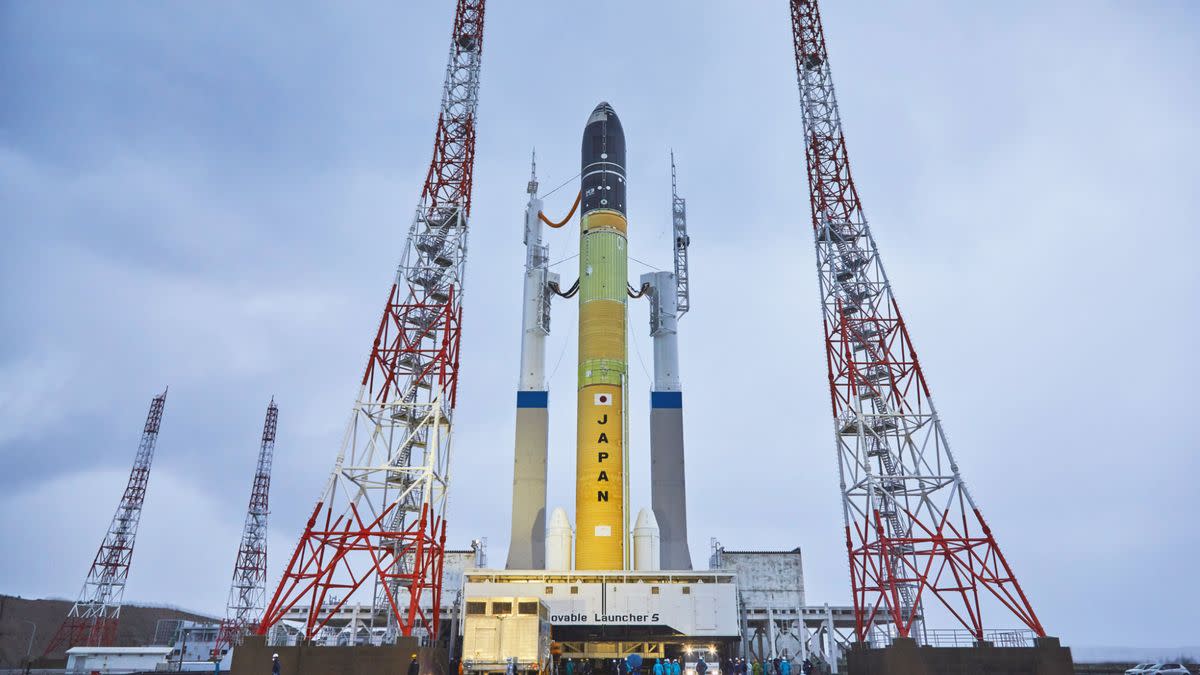Japan's H3 rocket will launch a 2nd time in February 2024 after explosive failure

The Japanese space agency's H3 rocket system will return to the launchpad in early 2024 after an explosive failure this year.
The H3 will launch from the Japan Aerospace Exploration Agency's (JAXA's) Tanegashima Space Center as soon as Feb. 14, 2024, officials said in a statement released on Wednesday (Dec. 27).
The prime launch window runs between 7:22 p.m. and 11:06 p.m. EST Feb. 14 (0022 and 0406 GMT, or 9:22 a.m. and 1:06 p.m. local time in Japan on Feb. 15.) Backup launch windows for the mission, designated H3 Test Flight 2 (H3TF2), run from Feb. 15 through the end of March.
The decision to launch H3 will be a year after the failed inaugural flight of H3, developed by Mitsubishi Heavy Industries (MHI), on March 7, 2023. The new launch will haul a flight demonstration module, called the Vehicle Evaluation Payload-4, along with two small satellites known as CE-SAT-IE and TIRSAT.
Related: Japan's new H3 rocket fails on 1st test flight, advanced Earth observation satellite lost
The H3 rocket stands at 187 feet or 207 feet (57 or 63 m) tall, depending on how it is configured at launch, according to JAXA. The launch system is capable of hauling over four tons of payload to a 310-mile (500-kilometer) sun-synchronous orbit, meaning that the lighting conditions are consistent below the spacecraft.
The rocket can also send in excess of 6.5 tons to a geostationary transfer orbit — the kind of orbits that satellites use to move into a geosynchronous orbit over Earth's equator. (Geosynchronous orbits allow satellites to consistently gaze at one spot of Earth's surface.)
During the last flight attempt in March, H3 operators at JAXA issued a self-destruct command to the H3 launch system, explosively concluding its first test flight. The destruction of the H3 rocket also resulted in the loss of the Advanced Land Observing Satellite-3 (ALOS-3), also known as DAICHI-3.
While the rocket lifted off successfully and accomplished stage separation, around seven minutes into the flight, it was noticed that the rocket's velocity was dropping. Operators also could not confirm second-stage ignition. The self-destruct command was sent shortly afterwards.
A month before the launch failure on March 7, JAXA scuttled a liftoff of the same H3 rocket due to a faulty power supply.
Related
— Japan's new H3 rocket fails on 1st test flight, advanced Earth observation satellite lost
— Faulty power supply scuttled debut launch of Japan's new H3 rocket
—New Japanese spacecraft aims to explore the mysterious moons of Mars
Neither JAXA nor MHI have disclosed many details of what caused the failure of the first H3 test flight, according to Space News. At a press conference in September 2023, MHI vice-president and general manager Iwao Igarashi said that an investigation into the H3 failure had been conducted, but did not elaborate.
The failed launch had ripple effects on another Japanese rocket, known as the H-2A. Both rockets use a similar second stage, causing H-2A's next launch to be pushed back from May to Sept. 2023 during the investigation.
H-2A's launch on Sept. 6 went without a hitch, however. It sent the moon-bound Smart Lander for Investigating Moon (SLIM) spacecraft and the X-Ray Imaging and Spectroscopy Mission (XRISM) telescope into space. XRISM is now working in orbit around Earth. SLIM reached lunar orbit at 2:51 a.m. EST (0951 GMT or 4:51 p.m. Japan time) on Monday (Dec. 25) ahead of an expected touchdown on the moon's surface on Jan. 19.

